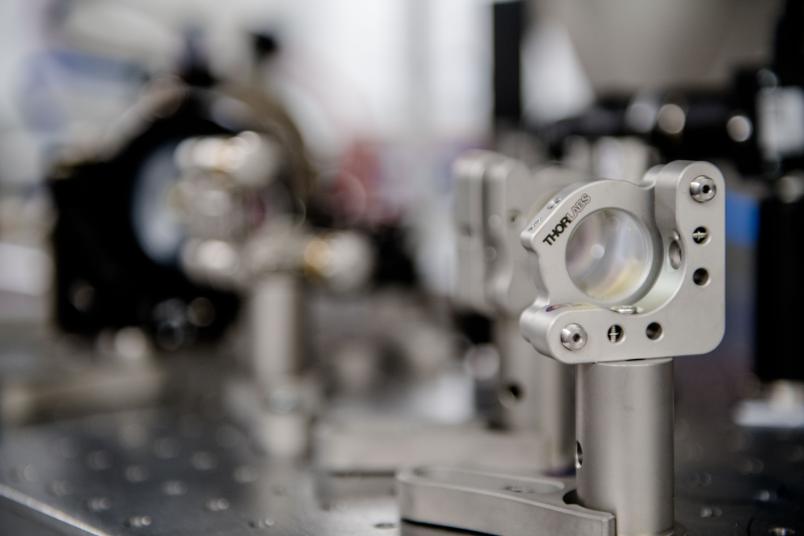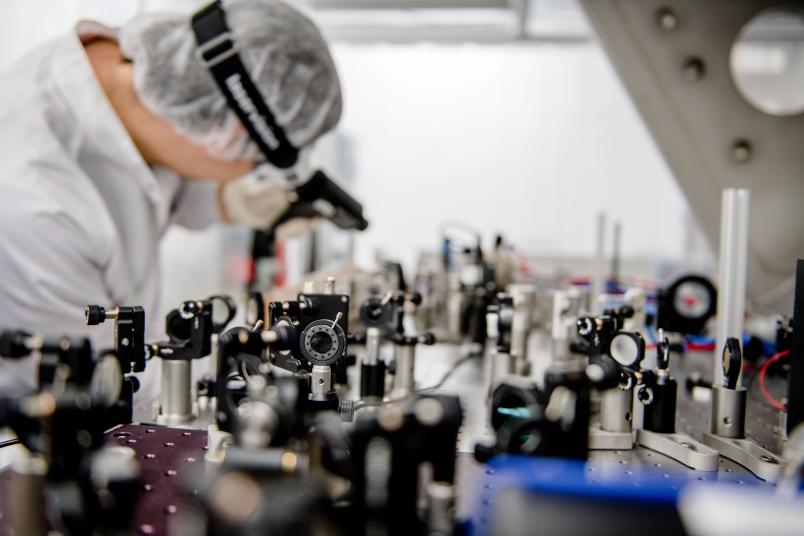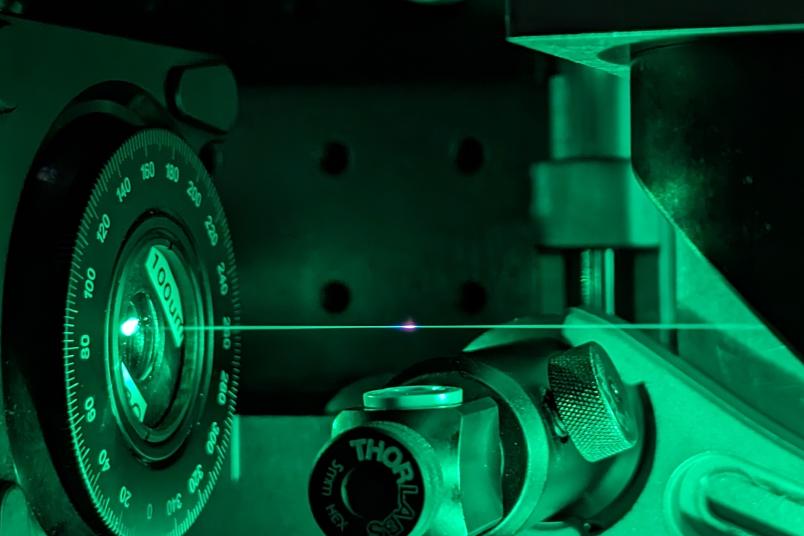
Ultrafast lasers are able to adjust the composition of plasmas. This revolutionizes light generation but also other areas.
Interview
Light Like No Other
Clara Saraceno develops and researches ultrafast pulsed lasers capable of achieving record-breaking performances.
Violet, blue, green, yellow, orange, red: The visible rainbow-like light spectrum represents only a small part of the entire electromagnetic spectrum. Terahertz rays, for example, are invisible to the human eye. Bochum physicist Professor Clara Saraceno generates them using specially developed ultrafast lasers. In this interview, the Argentine-born scientist talks about the groundbreaking technology of ultrafast pulsed lasers and their diverse applications.
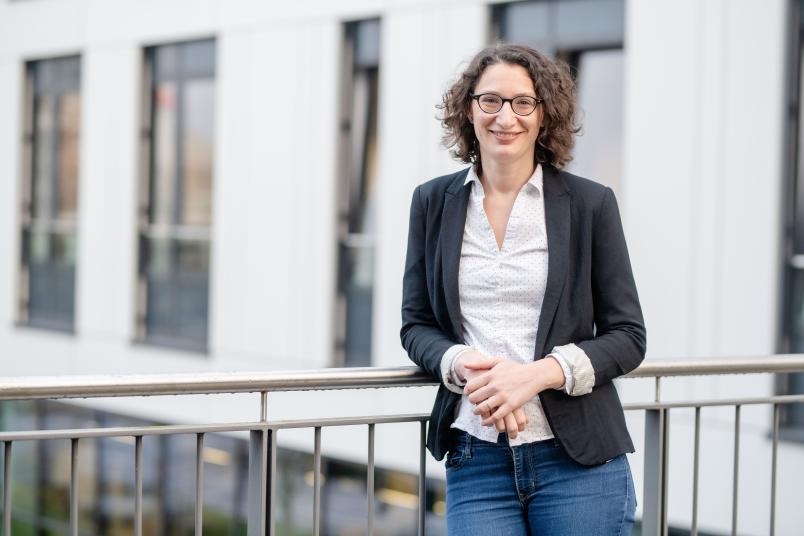
Clara Saraceno holds the Chair of Photonics and Ultrafast Laser Technology at Ruhr University Bochum.
Clara Saraceno, you work with lasers every day. How does laser light differ from sunlight or light from light bulbs?
One way to imagine light is as waves. Sunlight or the light emitted by light bulbs is not coherent. It radiates in different directions, it disperses, and you cannot focus it finely. Laser light, on the other hand, is coherent: It radiates at a specific wavelength. We speak of temporal or spatial coherence when the beams have similar properties at certain times or at certain points in space, when they radiate in the same direction, and with the same phase. You can imagine it like a musical string that vibrates and always shows the same pattern.
So when you build a laser, you artificially force light to become coherent. What do you need for that?
To make light coherent, you use an amplifying medium, called a laser medium, and a resonator. The laser medium is positioned between two opposing mirrors. We call the setup consisting of a mirror, a laser-medium, and a second mirror a laser resonator. The laser medium serves to amplify the laser light. Different substances, such as solids with special properties, can function as the laser medium.
Usually, we excite the laser medium using other types of light. The excited atoms emit energy in the form of light. The light beam is reflected by the mirrors and moves back and forth. The resonator ensures that only light in a specific direction is amplified. One of these mirrors is transparent, so the light can leave the device as a beam. The laser beam has a particularly high energy density and, in most lasers, consists of only one specific wavelength.
In your research, you focus on ultrafast pulsed lasers. How do they work?
A laser pointer usually radiates continuously. Light is constantly emitted. The lasers we work with, however, do not radiate continuously, but emit extremely short light pulses that last only a few femtoseconds, or quadrillionths of a second. This concentrates the energy of the laser extremely in time. Thus, a laser can achieve a very high peak power with a relatively low average power.
What kind of power are we talking about?
Currently, lab-based lasers can be built that, with these very short pulses at their peak, achieve the power of a nuclear power plant, i.e., several hundred megawatts to gigawatts. The femtosecond lasers used in our experiments usually have these power levels, but with the special property of being able to generate many more of these pulses per second, i.e. each pulse comes very close in time with the next.
In which areas are ultrafast pulsed lasers used?
These ultrafast pulsed lasers can process materials with particular precision. They are used, for example, in microchip work or in precision drilling. In addition, as is often read, they are widely used in medicine, in surgery, for example, in eye operations.
And of course, these ultrafast pulsed lasers are used in a variety of research institutions. At the National Ignition Facility in the USA, they try to generate extreme plasma conditions with these lasers, such as those found in the sun or in stars.
What exactly are you researching?
At my chair, we are working, among other things, on advancing the technology of femtosecond lasers. Our goal is to develop new ultrafast laser systems with higher average power, i.e. intense pulses that occur very frequently in time. To this end, we are researching, among other things, new materials for laser amplification or mechanisms for pulse generation.
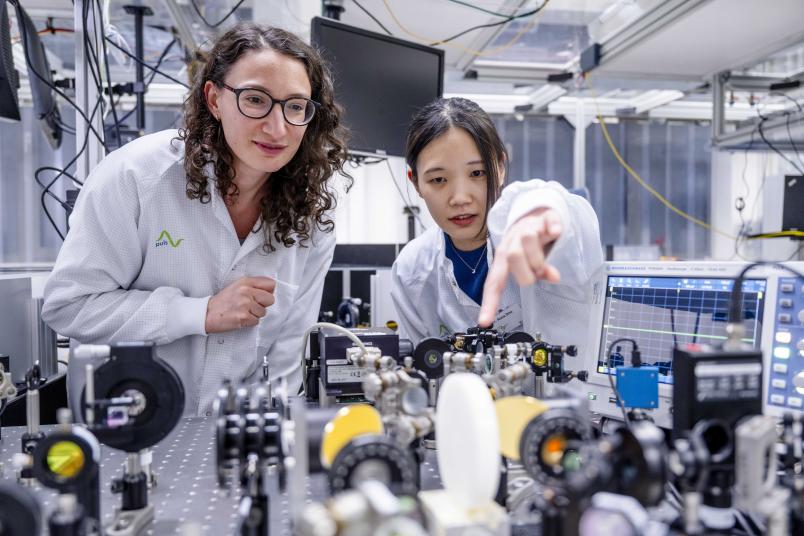
Clara Saraceno (left) and her colleague Anna Ono are working on advancing the technology of femtosecond lasers.
What do you use the powerful lasers for?
You can apply ultrafast pulsed lasers to different materials. One of the special things about femtosecond pulses is that you can drive most materials nonlinearly with them. This means that other wavelengths can also be generated. For comparison: If you point a laser pointer with low power at a piece of glass, the same color comes out. The only thing that happens is that some of the initial power is lost. If the power becomes high enough, new colors can be generated. For certain applications, such as in material processing, imaging or spectroscopy, however, you need light in other spectral ranges than normal lasers can offer. My group is currently focusing on reaching the terahertz range of the electromagnetic spectrum with ultrafast pulsed lasers.
Terahertz
What are you currently working on?
One of our current approaches is to use plasmas, i.e., energetically excited gases, as terahertz sources. Plasmas are very efficient and could eliminate many of the problems we have with crystals and solid-state sources.
Why plasma? How did you get the idea? You are not a plasma physicist.
We stumbled upon this quite by accident. We were annoyed because the crystals we otherwise use a lot in our experiments quickly get damaged. And so we started to deal with plasma and the physics behind it. Since our specialty is the generation of large numbers of intense pulses very closely spaced in time, we quickly realized that the plasma changes with the number of pulses and the spacing between pulses, leading to new plasma states. This is what we are researching in our recent ERC Grant: how to achieve previously not possible states of the plasma using lasers.
ERC Grant
So you are breaking new ground. How is it going?
Pulse by pulse, we try to change the chemical composition of the plasma. We study plasma chemistry and physical properties. This is really fascinating – the application of the laser as an energy source opens up new physics. We hope that we will succeed in adjusting the plasma properties in such a way that we can ultimately generate terahertz radiation of previously unattained power with the improved plasmas.
What particularly fascinates you about your work?
A lot is already known about how coherent light is generated. But all these mechanisms for generation change significantly when you work with extreme pulse parameters. Ultimately, we are also investigating how the physical mechanisms of terahertz radiation generation change compared to what was previously known. We are not so much focusing on a specific technique, but rather on the parameter range with which we excite the device. Sometimes it is a semiconductor, sometimes a crystal, sometimes a plasma – it is a very broad spectrum. And all our methods are based on completely different physical principles. Some come from plasma physics, others from solid-state physics, and so on. That’s super exciting.
Where is the journey going? Will the ultrafast laser revolutionize science?
The lasers we work with are so new that they are not yet really widely used.
The Beginnings
In Bochum, we want to explore a new field with our research on powerful lasers that combines plasma, material, chemistry, and laser research. We hope that with our approach we can expand the limits of THz technology. The new laser technology would not only revolutionize light generation but also have enormous impacts on many other areas, for example, atmospheric research. Researchers are already considering how the lasers might possibly generate clouds or cause discharges. That’s really supercool.
